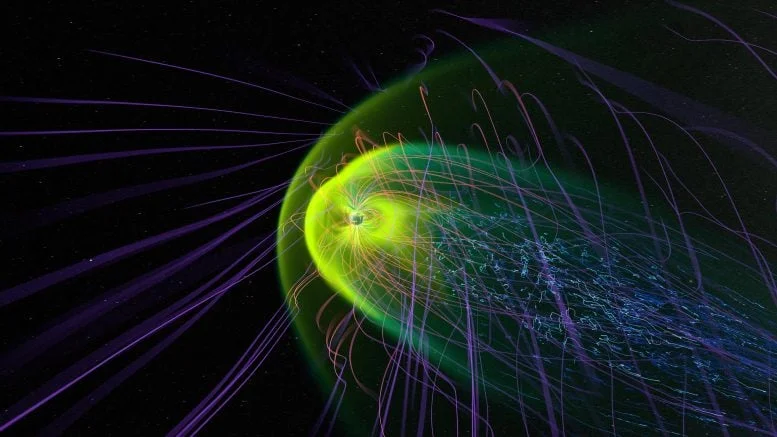
Rare Metal Clouds Appear After Solar Storm: A New Threat to Radio Communication?
A recent solar superstorm, peaking around Mother's Day in May 2024, unleashed a surprising phenomenon in Earth's upper atmosphere: the surge of rare metal-rich clouds known as sporadic E layers. While typically overlooked, these layers intensified dramatically during the storm's recovery phase, revealing a potentially underestimated impact of space weather.

Researchers from Kyushu University, led by Professor Huixin Liu, published their findings in Geophysical Research Letters. Their study highlights the unusual behavior of the sporadic E layer, located 90 to 120 kilometers above sea level. These layers are characterized by thin, dense patches of ionized metal particles that appear and disappear quickly.
"When studying the Mother’s Day geomagnetic storm, many researchers looked at what happened in the F layer of the ionosphere... The sporadic E layer hasn’t been studied very much during the storm because it appeared unaffected by solar storms," explains Professor Liu. "But we wanted to see if something as powerful as the Mother’s Day geomagnetic storm did anything to the E layer. What we found was very interesting."
The team's analysis, using data from 37 ground-based radars (ionosondes) and the COSMIC-2 satellite network, revealed that these clouds were concentrated over Southeast Asia, Australia, the South Pacific, and the East Pacific. Intriguingly, the clouds appeared to travel from the polar regions towards the equator, suggesting a large-scale atmospheric wave triggered by the storm.
This discovery challenges the previous understanding that sporadic E formation was primarily driven by localized atmospheric processes. Instead, it indicates a stronger connection to large-scale geomagnetic activity. "In our analysis, we found that sporadic Es formed after the main phase of the solar storm, during what we call the recovery phase," Liu stated. "Sporadic Es were also detected first in the higher latitude regions, around the Earth’s poles. They were then detected gradually in lower latitudes over time. This propagation characteristic from high to low latitudes suggests that sporadic E layers are most likely caused by the disturbed neutral winds in the E region."
The implications of this research extend to radio communications. The sporadic E layer is known to disrupt radio signals in the HF and VHF bands, crucial for aviation, maritime, and military operations. The recent study suggests that with the surge of these layers triggered by solar storms, the risks to global communication infrastructure might be higher than previously estimated.
Researchers hope these new insights will improve our ability to forecast such events and mitigate potential communication disruptions. By understanding the timing and geographical spread of these metal clouds, agencies may be able to develop more effective mitigation strategies.
"We now know that sporadic Es enhance during the recovery phase of a solar storm, so perhaps we can forecast more accurately sporadic Es using the propagation characteristics found in our study and mitigate potential communication disruptions," concludes Liu.
This discovery underscores the complex interplay between space weather and Earth's atmosphere. How else might these events impact our technology and daily lives? Share your thoughts and questions in the comments below!